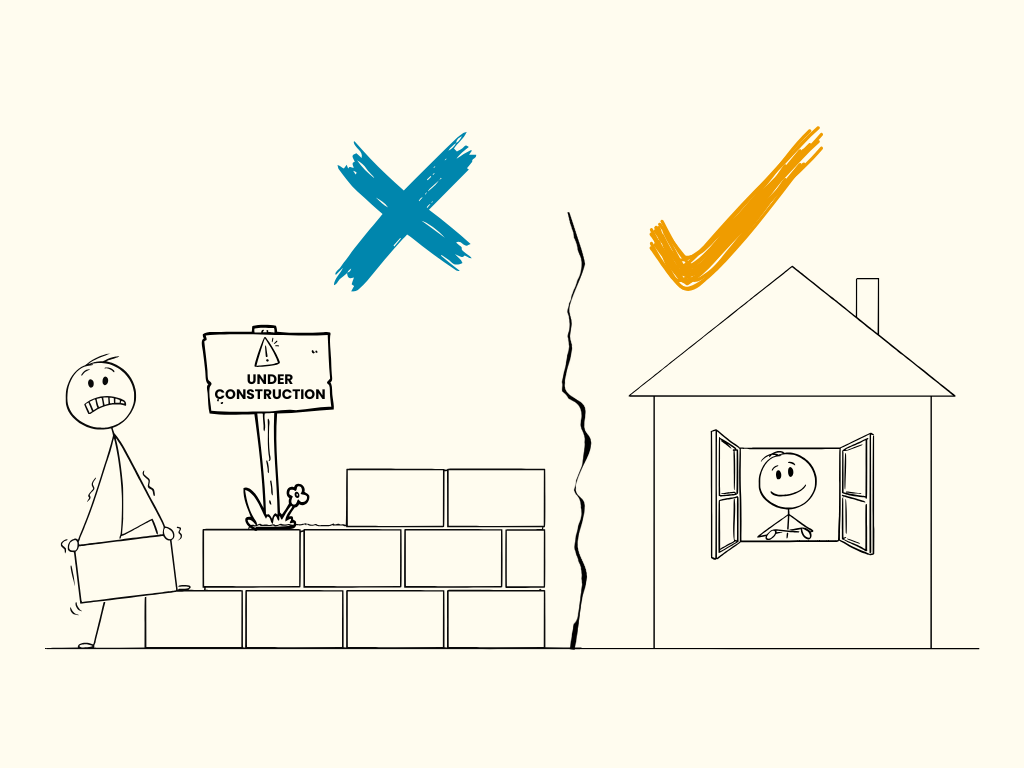
Weighing Your Options: Under Construction vs. Ready-to-Move-In Properties
Introduction:
When embarking on your home-buying journey in India, one of the first decisions you'll face is choosing between under-construction and ready-to-move-in properties. Both options have their merits and drawbacks, and understanding these can help you make an informed decision that aligns with your needs and financial goals.
Definition:
- Under-construction properties:
- Homes where construction is still ongoing or yet to start, but the plans and approvals are in place.
- Ready-to-move-in properties:
- Fully completed homes that are immediately habitable and often include fixtures and built-in amenities.
Price Differences and Potential Savings
- Under-construction properties:
- Often priced significantly lower than ready-to-move-in options, sometimes by 10-30%.
- Provides opportunities to lock in pre-launch prices or early-bird discounts, offering additional savings for buyers.
- The potential for price appreciation as the project nears completion, though this depends on market conditions.
- Ready-to-move-in properties:
- Higher upfront costs due to immediate possession, as these homes come with fully established amenities and no waiting period.
- Immediate value assessment is possible as you can gauge the property’s worth at the time of purchase.
- GST savings: Ready-to-move-in homes do not attract GST, while under-construction properties do, making them financially more advantageous in this regard.
Customization Options
- Under-construction properties:
- The flexibility to choose layouts, fixtures, and finishes based on personal preferences.
- Opportunity to make structural changes (subject to developer approval), allowing for a more customized home.
- Ability to design spaces like kitchens and bathrooms more in tune with your personal style.
- Ready-to-move-in properties:
- Limited scope for major changes but offers immediate use of existing features and amenities, such as pre-installed fixtures and modular kitchens.
- Minor renovations can be carried out, but larger design changes are often not feasible.
Possession Timeline
- Under-construction properties:
- Expect a waiting period of 2-4 years or longer depending on project complexity and size.
- Potential for delays due to factors such as supply chain issues, regulatory approvals, or financial problems faced by the developer.
- Gradual payments made as per the construction-linked schedule, allowing flexibility in cash flow management.
- Ready-to-move-in properties:
- Immediate possession and occupancy as soon as the deal is closed, with no uncertainty about move-in dates.
- No delays related to approvals or construction, allowing for quicker relocation.
- Full payment required upfront, though this ensures there are no further financial obligations related to construction milestones.
Risk Assessment
- Under-construction properties:
- Possession risks: Delays in delivery can be caused by developer insolvency, financial mismanagement, or regulatory hurdles.
- Quality concerns: The final product may not always match the specifications promised during the initial agreement. This includes potential discrepancies in materials, finishes, or overall build quality.
- GST Impact: Since GST is applicable on under-construction properties, it increases the overall cost for the buyer.
- Ready-to-move-in properties:
- No construction-related risks: What you see is what you get, and there’s no concern about deviations from the promised build quality.
- Immediate quality checks: Buyers can thoroughly inspect the property before purchase, ensuring the quality matches expectations.
- Established neighborhoods: Ready-to-move-in homes are often in fully developed areas, meaning fewer surprises regarding the surrounding infrastructure.
Financing, Cash Flow, and Exits
- Under-construction properties:
- Financing: Some banks may be hesitant to finance under-construction projects unless the builder is reputed. However, staggered payments linked to construction milestones offer flexibility in managing your cash flow.
- Exit strategy: Exiting under-construction projects can be complicated, especially if there are construction delays or legal disputes. In some cases, finding buyers may be difficult if the project isn’t near completion.
- Staggered payments: Allows buyers to plan their payments better, as opposed to making a lump-sum upfront payment.
- Ready-to-move-in properties:
- Financing: Easier to obtain as banks are more willing to provide loans for completed projects.
- Cash flow: Payment has to be made upfront, which requires immediate capital, making it less flexible for buyers managing their cash over time.
- Exit strategy: Exiting a ready-to-move-in property is generally easier, as these homes are often in high demand in established areas.
Conclusion:
Choosing between under-construction and ready-to-move-in properties involves carefully weighing various factors. While under-construction properties offer potential cost savings and customization options, they come with inherent risks and a waiting period. Ready-to-move-in properties provide immediacy and certainty but at a higher price point. Consider your financial situation, risk tolerance, and immediate housing needs when making this important decision.
In our next blog, we'll delve deeper into the financial implications of each option, helping you understand the long-term impact of your choice on your investment and lifestyle.

